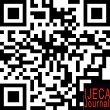Nutritional Status with Infant Motor Development
Abstract
Children under the age of five (toddler) Indonesia experience nerve development and brain disorders ranging from mild to severe. Every 2 out of 1,000 babies experience motor development disorders. Factors affecting motor development in toddlers, such as hereditary, prenatal environment, postnatal environment. Nutritional status plays an important role in motor development. The purpose of this research is to know the relationship of nutritional status with the development of coarse motor toddler This research is an analytical survey research with cross sectional approach. Sampling techniques used are total sampling. Sample as much as 60 toddlers. This data is collected using checklist and observation sheets. Hypothesis test using Chi square correlation analysis. Data analysis results show the value of P value (0.000) < α (0.05) which means there is a significant relationship as well as the relation of relationships belonging to the strong category with the frequency value of the coefficient of (0.625). In conclusion there is a relationship of nutritional status with the infant motor development, and the relationship of these two variables is significant.
Keywords
Full Text:
Download [PDF]References
Adriana, D. (2011). Tumbuh Kembang dan Terapi Bermain Pada Anak (2nd ed.). Salemba Medika.
Arikunto. (2010). Metodelogi Penelitian. Pendekatan Penelitian, 61–84.
Hidayat, A. A. A. (2008). Pengantar Ilmu Kesehatan Anak untuk Pendidikan Kebidanan. Salemba Medika.
Mariani Gabriela Kasenda, Sisfiani Sarimin, F. O. (2015). Hubungan status gizi dengan perkembangan motorik halus pada anak usia prasekolah di tk gmim solafide kelurahan uner kecamatan kawangkoan induk kabupaten minahasa. Ejournal Keperawatan (E-Kp), 3(1), 2–8. https://media.neliti.com/media/publications/111221-ID-hubungan-status-gizi-dengan-perkembangan.pdf
Muhoozi, G. K. M., Atukunda, P., Mwadime, R., Iversen, P. O., & Westerberg, A. C. (2016). Nutritional and developmental status among 6- to 8-month-old children in southwestern Uganda: A cross-sectional study. Food and Nutrition Research, 60. https://doi.org/10.3402/fnr.v60.30270
Priyo, L. S. dan S. H. (2018). Statistik Kesehatan (10th ed.). PT. RajaGrafindo Persada.
Ranuh, S. dan G. (2003). Tumbuh Kembang Anak (2nd ed.). EGC.
Sari, D. W., W, E. N., & Purwanto, S. (2012). Hubungan Antara Status Gizi Dengan Perkembangan Motorik Kasar Anak Usia 1 – 5 Tahun Di Posyandu Buah Hati Ketelan Banjarsari Surakarta. Jurnal Pendidikan Karakter, 157–164.
Sigit. (2012). Keadaan Status Gizi Terhadap Pertumbuhan dan Perkembangan Anak. Lumbung Pustaka UNY, 10–40.
Sunawang, Utomo, B., Hidayat, A., Kusharisupeni, & Subarkah. (2009). Preventing low birthweight through maternal multiple micronutrient supplementation: A cluster-randomized, controlled trial in lndramayu, West Java. Food and Nutrition Bulletin, 30(4 SUPPL.). https://doi.org/10.1177/15648265090304s403
DOI: https://doi.org/10.31764/ijeca.v1i3.2108
Refbacks
- There are currently no refbacks.
Copyright (c) 2018 IJECA (International Journal of Education and Curriculum Application)

This work is licensed under a Creative Commons Attribution-ShareAlike 4.0 International License.
IJECA (International Journal of Education and Curriculum Application) already indexed:










___________________________________________________________________
| |
____________________________________________________________________
IJECA Publisher Office:







.jpg)





